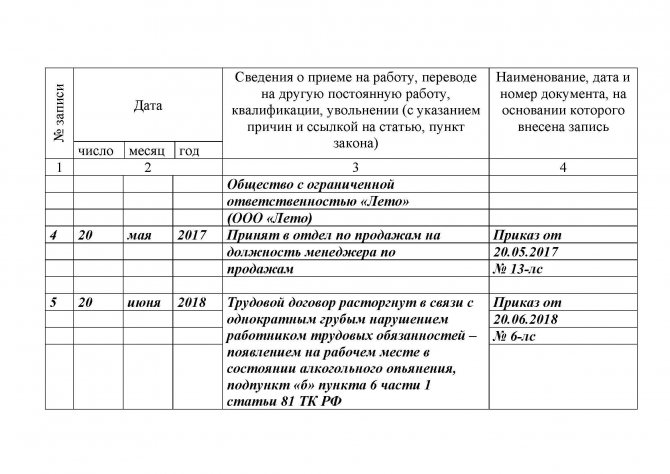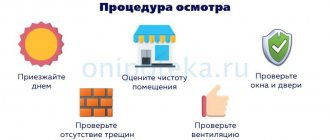Dismissing an employee due to appearing drunk is a difficult procedure due to a number of features. The employer and employee need to understand all the nuances of this situation in order to leave no chance for the unscrupulous party to the labor dispute.
ATTENTION : our labor law lawyer in Yekaterinburg will help both the employee and the employer in the procedure of dismissal for drunkenness: professionally, on favorable terms and on time. Call now!
Testing an employee for alcohol intoxication
An examination is the first step an employer must take when identifying an employee who is intoxicated.
Positive examination results are a prerequisite for the application of measures in the form of suspension from work and punishment. Violation of the examination procedure can lead to serious consequences for the employer in the form of compensation for wages to the employee for illegal dismissal, compensation for moral damage.
Based on the law and established court practice, there are three ways to detect drunkenness in the workplace:
- medical examination at the direction of the employer
- results of pre-trip examination of drivers, machinists and other persons who will be examined by doctors before starting their shift
- examination by the employer.
A medical examination is a way to document the fact that an employee is intoxicated at the workplace by sending him to a medical organization or inviting medical workers. In any case, the basis for examination by doctors is a referral from the employer. The procedure for health workers is described in the order of the Ministry of Health No. 933n. When sending an employee for a medical examination, the employer must know:
- the basis for a medical examination is a referral from the employer in accordance with paragraphs. 5 p. 5
- the examination can be carried out by medical workers of a licensed organization, and the medical organization can be state, municipal or private.
- The absence of a passport by an employee is not a basis for refusal of a medical examination, since on the basis of paragraph 5 of paragraph 5, the identity can be established by a doctor (paramedic) upon referral from the employer
- the results of the examination - a report in the form established by order No. 933n
- possible conclusions upon completion of the examination: state of intoxication established / not established / refused examination.
Pre-trip medical examination of drivers, machinists and other persons who are examined upon starting a shift. A pre-trip examination of a driver, driver or a pre-shift examination by doctors of a person occupying other positions and its results also duly indicate the inability of the employee to begin performing work functions and the reasons.
However, a medical examination is not the only way for an employer to document being intoxicated at the workplace. Based on judicial practice, in particular the guiding clarifications of the Plenum of the Supreme Court No. 16, the employer can confirm the fact of the employee’s drunken state with other types of evidence that must be considered by the court. Thus, other types of recording of facts of intoxication in the workplace, other than the conclusion of medical specialists, cannot be questioned.
The procedure for recording the fact that an employee is intoxicated by the employer is not regulated at the moment. Thus, one should rely on the general norms of labor legislation and office work rules, incl. h. personnel.
Persons authorized to carry out the procedure for recording the fact of drunkenness in the workplace are personnel inspectors due to the fact that the law entrusts them with the function of monitoring labor discipline among employers. In addition, the head of the organization or the immediate supervisor of the offending employee may participate in the procedure.
The form of the act is not established, but it must provide:
- Date, time and place of drawing up the act (03/19/2020, 08 hours 10 minutes, workshop)
- Last names, positions, signatures of employees present when drawing up the act
- Description of the employee’s condition, which allowed us to draw conclusions about his intoxication (shaky gait, smell of alcohol, redness of the skin, behavior inappropriate for the situation, incoherent speech, etc.)
- The act is signed by all persons indicated in it and the employee. Then the employee is asked to write an explanatory note.
If the employee does not want to sign the act, it is necessary to make a corresponding note in the act and also certify it with the signatures of the persons indicated in the act.
Suspension from work of an employee while intoxicated
The employer is obliged to suspend an employee if he is found to be intoxicated. Management's decision to dismiss is formalized by an order with which the employee is familiarized. Failure to familiarize an employee with the order of suspension entails serious consequences, since this makes it possible to challenge the amount of payment during the period of suspension and challenge the penalties applied.
If an employee refuses to familiarize himself with the order, this is not an obstacle to his removal. The refusal is recorded in a separate act, and the order itself is subsequently sent to the employee.
The suspension from work must be actual. Formal actions reflected in the documentation must be completed. Failure to comply with them and failure to remove the employee from his work functions entails the full responsibility of the employer.
If an employee is in a state that allows him to fear for his life, health, or for the life and health of others, the employer must take measures:
- Call an ambulance
- Contact the employee's relatives
- Take other measures to effectively suspend and provide medical attention to the employee, if necessary.
USEFUL : read the full procedure for removing an employee from work at the link
Disciplinary action for appearing while intoxicated
The imposition of a disciplinary sanction is formalized by order. The employee must also be familiar with such an order, otherwise it has no legal force.
In accordance with labor legislation, an employee can be punished for violation of discipline in the following forms:
- Comment
- Rebuke
- Dismissal
- Other forms of collection are prohibited . However, certain categories of employees may be subject to disciplinary sanctions, specified in special disciplinary regulations.
Regarding an employee who appears in a state of intoxication, the employer independently chooses the form. The Labor Code requires the employer to impose a penalty taking into account the severity of the violation of discipline.
Is it necessary to remove an employee from service?
Suspension of an employee is the responsibility of the employer. This is done to ensure the safety of himself, other employees and third parties.
The removal is formalized by an order stating:
- organization details;
- employee data;
- time of detection of the fact of intoxication;
- basis for drawing up the order.
The employee must be familiar with the order. If he refuses to do this, then the appropriate mark is placed.
The person withdraws until the cause is eliminated, that is, until he sobers up.
Read: Employee rights upon dismissal
Can you be fired from your job for drunkenness?
Dismissal for appropriate reasons is an independent measure of punishment for violation of discipline at work. Labor legislation provides a clear list of violations of labor discipline, which give the right to terminate an employment contract. Showing up at work while drunk is one of these reasons.
Therefore, dismissal on this basis is legal. It is worth clarifying that such dismissal is legal subject to compliance with the procedures for examination, removal and application of “disciplinary measures”. Entering into the work book the grounds for dismissal in the form of drunkenness without grounds is not legal.
How to fire an employee for drunkenness: step-by-step instructions
The procedure for terminating the contract in this case looks like this:
- The employer or subordinates discover an employee who is drunk. In the latter case, a memorandum is drawn up addressed to the director.
- The violation is recorded in a written act signed by at least two witnesses. They may be other employees, even if they work in the same department as the person being dismissed.
- The offender is asked to undergo a medical examination. If the organization has a full-time health worker, he does the tests. In other cases, the citizen is taken to a specialized dispensary, where blood is drawn and a conclusion is drawn up indicating the number of ppm and the degree of intoxication. The document is attached to other materials.
- The head of the department requests an explanatory note from the violator, which is provided by the latter within two working days. If an explanation is refused, an act is drawn up.
- Having received an explanatory note and prepared documentation, the employer issues a dismissal order. The employee must be familiarized with it against signature. If you refuse to sign in the presence of witnesses, an act is drawn up, or a mark is placed on the order itself - the choice is at the discretion of the director.
- On the last working day, violators are paid in full for wages and unpaid vacation. Any misconduct committed is not grounds for canceling these payments. All documents are also issued: diploma, work book, etc.
Expert opinion
Lebedev Sergey Fedorovich
Practitioner lawyer with 7 years of experience. Specialization: civil law. Extensive experience in defense in court.
All reports, medical reports and acts must be collected in one folder. In the absence of any of the documents, the dismissed person will be able to challenge the termination of the contract in court.
Another significant nuance is the employee’s activities during the proceedings before the order is issued. While the circumstances are being clarified (requesting an explanatory note and undergoing an examination), the employer has the right to remove the offender from his position by issuing an appropriate order. In the future, it will also be attached to the rest of the documentation.
Signs of intoxication
Before dismissing an employee, the manager is obliged to make sure that there are signs of intoxication and send him for examination. The basis for sending may be:
- inappropriate employee behavior;
- characteristic smell;
- lack of coordination, unsteady gait;
- dilated pupils;
- facial redness;
- the appearance of hallucinations;
- incoherent speech.
Documents upon dismissal
After the order is issued, on the last working day, the head or employee of the HR department is required to issue a work book and educational documents submitted during employment. If during work a citizen improved his qualifications and received certificates (certificates, certificates), they are also required to be issued.
The accounting department is obliged to provide the dismissed person with certificates of contributions to the Pension Fund and average earnings. A 2-NDFL certificate is also issued. At the employee's request, a copy of the dismissal order is issued.
Showing up at work drunk after hours
From a legal point of view, an employee appearing drunk at a non-working place can only be considered an administrative offense in accordance with Art. 20.21 Code of Administrative Offenses of the Russian Federation. The employer should limit itself to calling the police.
In addition, labor legislation provides that the basis for dismissal is the appearance at the workplace of an employee performing a labor function. During non-working hours, the employee does not perform labor functions and cannot be fired for this.
How to fire an employee for drunkenness?
To fire an employee who shows up drunk at work, you must:
- Examine his condition by the employer, by a physician or medical organization at the direction of the employer, or based on the results of a mandatory pre-trip medical examination
- To remove an employee from performing his duties by order. Take measures to effectively remove you from work.
- Issue an order to impose “disciplinary action” in view of dismissal on the basis of clause b) clause 6 of Art. 81 of the Labor Code of the Russian Federation and familiarize the employee with it.
- Issue to the employee or send by mail a notice of termination of the employment contract, the date of its termination, making sure that he is not on sick leave.
USEFUL : watch the video about the dismissal of an employee, and also read the link
What formalities need to be followed?
The article of the Labor Code of the Russian Federation classifies appearing at work while drunk as culpable grounds for dismissal. This means that the employee is deprived of the right to receive severance pay, as well as a number of other incentive payments. However, the citizen will receive monetary compensation for the time worked, as well as compensation for the days of remaining rest. When placing an order, the manager must decide how the calculation will be made for the remaining days of vacation. This balance can be provided in kind or compensated in cash.
A sample dismissal order must contain the following points:
- date and document number;
- information about the employee, his position and structural unit;
- the basis for termination of employment relations is the conclusion based on the results of an internal investigation;
- link to the article of the Labor Code of the Russian Federation;
- a note indicating that the citizen is familiar with the contents of the order.
A sample entry in the work book will contain details of the manager’s order (date and number), as well as a link to clause. b) clause 6, part 1, art. 81 Labor Code of the Russian Federation. When issuing a work book, a citizen must be familiar with every entry made during the period of work at the enterprise. If the dismissed employee refuses to receive the document, it can be sent by mail in a valuable letter with a list of attachments.

Violation of the dismissal procedure will be grounds for reinstatement. An employee can file a claim within a month after reading the order or receiving a work record book. As a rule, the claim is satisfied if the deadlines for bringing to responsibility are violated, the employee is refused to provide written explanations, or if the fact of intoxication is inadequately confirmed. If the court decides to cancel the order, the citizen is reinstated in his previous position, and for the entire period of forced absence he will be compensated with average earnings.
This is important to know: Sick leave in a hospital: registration
How to challenge dismissal for drunkenness or disciplinary action?
Challenging dismissal is an individual labor dispute that can only be resolved by a court. Other authorities may apply administrative measures to the employer.
Challenging dismissal in court is possible within three months from the date of actual dismissal. This is the statute of limitations for individual labor disputes.
As a rule, it is disputed:
- Application of dismissal, legality of its application by the employer
- The fact of being intoxicated at work
In any case, the employee must provide the necessary evidence, which may be:
- Testimony of other witnesses
- Regulatory and documentary grounds demonstrating the illegality of applying disciplinary sanctions in the form of dismissal
Dismissal for drunkenness: step-by-step procedure
So, how to fire an employee for drinking in the workplace? You can be fired for drunkenness in the workplace from the moment an employee is found to be inappropriate during his work shift. To do this, it is necessary to carry out a number of procedures to register this fact:
- Before filling out a violation report, you must make sure that the employee is actually in the state in which he is suspected.
To eliminate the possibility of error, it is necessary to involve a couple of people who will witness the incident.
These may be employees of other departments, but it is optimal to involve a lawyer and an employee of the labor protection department for help. Clause b, part 6, 81 of the article for drunkenness in the workplace provides that the employee must first be suspended from work. This is required by Article 76 of the Labor Code.
Also, the article for drunkenness at work states that if the employee is not suspended in a timely manner, all consequences arising for this reason during the performance of his job duties will be borne by the employer.
Therefore, this procedure should be carried out by formalizing it with an appropriate order from the head of the department or the organization as a whole. You need to write a report about the employee being drunk at the workplace. The creation of such a document is necessary to further prove the legality of dismissal in court.
When dismissal under an article for drunkenness, it is very important to write down all subsequent points in the act.
- Name of the organization.
- Time, date of document preparation. Where was it issued?
- Full name of the employee through whose fault all procedures are carried out.
- Positions and names of witnesses who confirm the fact of the employee’s condition.
- Full name and position of the person drawing up the act.
Description of all external symptoms indicating the presence of intoxication of the employee: the smell of alcohol, obscene speech, awkward movements, redness of the skin, resistance when registering a violation.
Sample report on an employee being drunk at work. It is necessary that in the act the person responsible for the incident writes in his own hand an explanation about the current situation.
If the employee does not want to give an explanation, this must also be indicated in a separate paragraph. Sending an employee for examination to a medical institution must be carried out exactly in accordance with the rules prescribed in the relevant instructions.
Expert opinion
Lebedev Sergey Fedorovich
Practitioner lawyer with 7 years of experience. Specialization: civil law. Extensive experience in defense in court.
Such an examination is considered legal only if it is carried out by narcologists in specialized drug dispensaries or when specially trained doctors of other profiles visit medical equipment. vehicle inspections.
Payment for travel to the venue and the procedure itself is carried out at the expense of the initiator of clarifying the situation, that is, the employer.
The sooner the employee is sent to medical care. examination, the greater the likelihood of confirming the fact of a violation, since after several hours from the moment the paperwork begins, alcohol in the blood may no longer be detected. The employee will have to write an explanation when reporting to work in a sober state.
This is important to know: Continuous work experience: how many days break
This document is mandatory for the legality of imposing an official penalty. In addition, this will confirm the recognition of the fact of intoxication and the consent of the offender himself.
If the employee is not going to write an explanation regarding the situation that has arisen, it is necessary to draw up an act indicating the refusal, signed by 2 witnesses and the boss.
Since the law gives the employee 2 days to submit a report on the situation, the refusal act should be drawn up not at the moment when the employee indicated that he will not write an explanatory note, but after two days from that moment. Documents are drawn up regarding dismissal for drunkenness. The fact of issuing an order to dismiss an employee must be communicated to him within 3 days. It is necessary to obtain the signature of the dismissed person and give him a copy of the document.
An order for dismissal under the drunkenness clause must be drawn up in Form T-8. All documents that took place during the investigation must be referred to in a separate paragraph of the order “Bases”.
If the offer to sign the order is refused, an act is drawn up, which will be signed by the chief and two third-party (from other departments) persons.
All of the above actions must be carried out no later than one month after the violation is discovered. If the decision of a manager to dismiss, formalized as an order, is not made within the approved period, it will not be possible to dismiss the employee. It is necessary to make an entry in the work book about dismissal for being in an unauthorized state at the workplace.
An employee dismissed due to being drunk at work receives the following payments:
- wage;
- vacation days he did not use.
An employee is not entitled to compensation and other payments such as severance pay upon dismissal for drunkenness in the workplace.
Dismissal for alcohol intoxication can occur if it happens even once.
To know how to fire an employee for alcohol intoxication, it is important to correctly draw up all the documents, providing the necessary evidence and confirmation of witnesses, since it is impossible to exclude the possibility of challenging this wording of dismissal by an employee through the court.
Didn't find the answer to your question? Find out how to solve exactly your problem - call right now:
Help from a lawyer in Yekaterinburg
A labor dispute lawyer is able to properly accompany the procedure of examination, suspension and dismissal of an employee who appears drunk at work, as well as represent the interests of the organization in the event of a dispute with such an employee in court, or claims from supervisory and labor control authorities.
An illegally dismissed employee needs the help of a labor lawyer in order to defend his rights in court, reinstate him at work, and remove a defamatory entry from his work record book.










